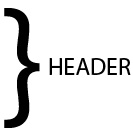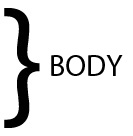How to write a Reference Letter
How to Write a Reference Letter
Writing a reference letter depends on the content, the issuer, the requester and the recipient. You have to write the letter keeping them in mind; other formal structure is basic and applicable to all types. Towards this effect format, template, tips and examples will help you in writing a reference letter.
Reference Letter Writing Tips
- Appropriate Authority – A reference letter has to be written by the most appropriate authority as it would sound odd for a professor of chemistry to write a reference for someone who is seeking a course of study in linguistics. Thus a reference required for a profession is most appropriate by previous employer, trainer etc. And an academic reference will be most appropriate by the concerned professor or teacher.
In this way an employment reference will contain the requester’s:
- Work experience
- Job responsibilities
- Qualities
- Suitability
An academic reference will contain the requester’s:
- Academic performance
- Awards and honours
- extracurricular achievements
- Discipline
- Ensure your Authorization – It is obvious that a reference letter will be written by a person of authority but what about the validity of the authorization? Find out if you are indeed authorised to write a letter of reference. Certain organisations have policies regarding this matter mostly because of liability reasons a subsequent employer could sue an earlier one for failing to disclose something about a candidate, or for misrepresenting him or her in some way.
How to Start a Reference Letter
Not a tedious task, as with business letters or official letters you can start by providing your name, title, organisation, address if you do not have a letterhead providing the same. If the letterhead does not contain your name and address you can use it at the end of the letter. Address the recipient as “To whom it may concern” as shown in the Reference Letter Format. If the recipient’s name and address is available you can use that and address accordingly. In the body of the letter you have to give a brief introduction of yourself in the initial paragraph. Then you move onto explaining your relationship with the candidate.
- Analyse the Requester – It is crucial that you know the requester well enough to give/deny reference to the applicant. If you do not know the applicant, your writing may not appear sincere. You can be held in contempt if the applicant does not turn out to be as per your reference. So, ensure that you know the requester well enough to hand out a reference. It is most appropriate to decline a reference to an applicant - Who is unworthy of your reference or unworthy of job/scholarship etc. or with whom you have a bad record.
- Pre-Plan – Pre-plan requires a lot of things. Arrange for all the documents required to write the letter. You will need these to refer and put forth examples.
The required essentials:
- You need to have documents supporting the applicant’s achievements – certificates, honours, awards and so on
- List all the qualities of the individual
- Work experience
- Specialisations
- Research work
- Position applied for
- Get information about extracurricular activities
- Information of the usage of reference
- Information about its recipient or reader
- Applicants requirements towards the document
- Explain your Relationship – As the writer of reference letter you have to clearly mention your relationship with the applicant. Is the applicant your employee or a student? You also have to inform about duration of your relationship.
- Give reasons for Reference – It is a prerequisite that you provide solid reasons for your reference. You can also highlight them to make them obvious.
Your reference should summarise the following:
- Specific, concrete examples and anecdotes regarding the requester’s talents, passion and/or character
- Depiction of multidimensional personality of the applicant so that he is not considered good for only certain things
- Apt Attributes - The National Association of Colleges and Employers (NACE) a non profit professional association for college career services and recruiting practitioners has come up with a list of attributes which are the most suitable to describe the candidate.
These attributes are:
- Ability to communicate
- Intelligence
- Self-confidence
- Willingness to accept responsibility
- Initiative
- Leadership
- Energy level
- Imagination
- Flexibility
- Interpersonal skills
- Self-knowledge
- Ability to handle conflict
- Goal achievement
- Competitiveness
- Appropriate vocational skills
- Direction
- Letterhead adds Credibility – A movie poster has the name of the director on it and that name adds credibility to the poster whether good or bad is another criteria. Similarly a letterhead adds credibility to your letter. It shows that someone important is vouching for you and not just anyone. To add to this effect you can include your title on your signature as well.
- Reference should be Short – A reference letter is supposed to be short but not too short. To makes sure you do this, choose number of pages and or number of words. Stick to this limit and it will be of appropriate length. A letter of 1-2 pages is generally considered as an ideal one.
What to avoid in a Reference Letter
- Projecting unrealistic qualities
- Remarks which are sarcastic or can lead to a negative impression about the applicant
- Delving into applicant’s disabilities, marital status, nationality, parental status, political preference, race, religion and other irrelevant personal information
- Use of casual vocabulary, joke and/or slang
- Proofread – Proofread your letter so that it is error free. Use online or offline spellchecker. Check the usage of correct grammar or any irrelevant information. Read it aloud to figure out mistakes missed in writing. Use a good quality paper and ink which will stick.
Standard Reference Letter Format
|
Referrers Letterhead Your Designation Your Address (can be positioned to the left, right or centre) Date (can be positioned to the left, right or centre, before/after or at the start)
To Whom It May Concern 1st Paragraph - Referrer’s relationship with the referred etc. 2nd Paragraph - Detailed and specific information on the referred, reasons, qualities etc. 3rd Paragraph – Summarise the candidate’s overall personality
Subscription - Thanking you, yours sincerely etc. Your Signature Your Typed First Name Last Name |



